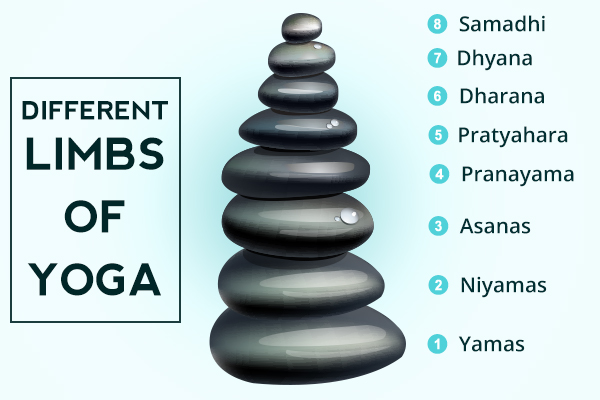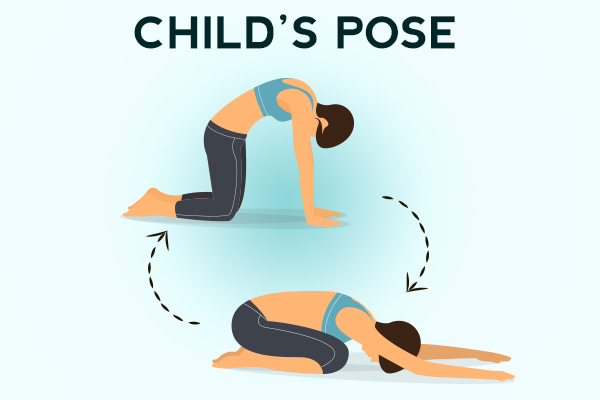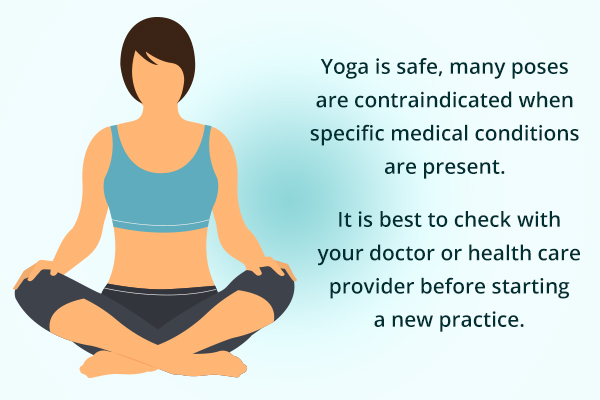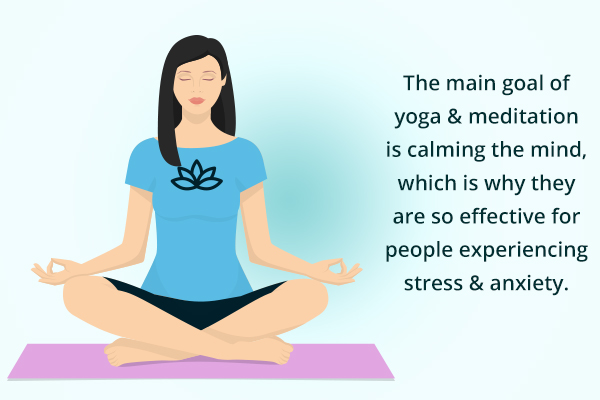In this article:
Practicing yoga helps in reducing stress and relaxing your body and mind. It also lets you focus on your breathing to help you balance, calm, and ease yourself. Also, yoga offers various other benefits that boost your general health.

The Benefits of Practicing Yoga Daily
Regular yoga practice provides an opportunity to still the mind, bring awareness inside the body, and reconnect to the breath. Even a 10-minute practice in the morning or before bed will provide many benefits.
Consistency is key, so a shorter daily practice is recommended over a longer practice that is only done once a week.
Different Limbs of Yoga

Yoga has eight limbs, which refer to practices written by Patanjali in The Yoga Sutras around 500 BCE.
Each step is meant to guide the student deeper into their spiritual journey, beginning with healing the body and ultimately reaching enlightenment.
The eight limbs are:
- Yamas – The Yamas provide ethical guidelines, including honesty and non-violence.
- Niyamas – Niyamas focus on self-discipline, spiritual study, and practices.
- Asanas – Asanas are the poses performed with the intention of preparing for meditation.
- Pranayama – Pranayama is about learning to use the breath to control the mind and body on an energetic level.
- Pratyahara – Pratyahara focuses on sensory withdrawal and turning awareness inward, away from external distractions.
- Dharana – Dharana bringing the mind to focus on one thing, such as the breath or the navel center.
- Dhyana – Dhyana is a deeper concentration in which the mind is completely quiet, often referred to as meditation.
- Samadhi – Samadhi is the final stage when your focus merges with the object, and there is a feeling of connectedness and bliss.
The Role of Yoga in Relaxing and De-Stressing
Many people focus on the physical aspect of yoga, but the true goal is to relax the mind, inherently making it a wonderful practice for reducing daily stress.
Multiple research studies have found that after 8 weeks of yoga practice, individuals experience less stress and improved well-being scores. (1)(2)(3)
Specifically, yoga reduces the stress hormone cortisol and lowers blood pressure, heart rate, fasting blood glucose, and cholesterol levels. (4) It has also shown promise in improving immune function. (5)
Calming Yoga Pose to Relieve Mental Stress
The causes of anxiety can vary, so what helps one person may not always work for another. However, for many people, doing dynamic movements that link the body and breath can help bring awareness from their thoughts back into their bodies and calm the mind.
Here’s a yoga pose you can try:

- Start in the tabletop position with your hands under the shoulders and knees under the hips.
- Take a deep breath, and then exhale as you push your hips back toward your heels into the child’s pose.
- Inhale and rise into the tabletop pose, and repeat the movement, flowing with your natural breath.
- Keeping your mental awareness at your root or pelvis will assist in grounding the mind.
- Once your mind feels calmer, stay in the child’s pose, and watch your breath as your belly pushes against the thighs.
- Stay in this position for about 2 minutes or until you feel ready to end the practice.
This can easily be done in a chair if you’re at the office. Just inhale when you’re sitting upright, and then fold your chest toward your thighs as you exhale. Any forward folding movement that brings the chest closer to the legs helps quiet the mind and calm the body.
Does One Need a Yoga Teacher to Practice Yoga?
Simple asanas, pranayama practices, and meditations can easily and safely be done on your own. However, more advanced practices should be learned from an experienced teacher to ensure that they are appropriate and performed safely.
It is recommended to have a short daily practice to get the most benefit, and a teacher can provide this for you. Also, if you’re looking to address specific issues, then seek out a knowledgeable yoga teacher to support you.
Take Proper Precautions

Although yoga is safe, many poses are contraindicated when specific medical conditions are present. It is best to check with your doctor or health care provider before starting a new practice.
- You will want to modify or ask a teacher for alternative poses if you have any issues with your spine or discs, hamstrings, sacrum, lower back, and shoulders.
- Be cautious of performing inversions, such as the handstand, and specific breath practices if you have congestive heart failure, hypertension, hypotension, hernia, stroke, glaucoma, and neck or spinal issues.
- Special considerations need to be taken if you are pregnant, and these vary depending on the trimester, but many prenatal yoga classes are available to address these considerations.
The Importance of Meditation in Yoga
Meditation is a form of yoga and is focused on liberating the mind from disturbances. The tradition of yoga utilizes physical postures to calm the mind and prepare the body for sitting in meditation.
Meditation is the process of withdrawing your senses, bringing the mind to one-pointed focus, and then merging with that object in samadhi, where you are free of your own mind and mental constructs of life.
Practicing meditation regularly allows you to be present in your daily life as an observer. You become aware that you are more than your thoughts and are no longer controlled by the inner drama of your mind.
ALSO READ: How to Meditate for Beginners
Is the Camel Pose Helpful in Relaxing the Mind?

The camel pose is a backbend, so energetically, it helps open the heart and energize the body.
If you are feeling heavy or depressed, doing the camel pose may help you feel more invigorated, but if you’re feeling anxious and stressed, it may make you feel worse.
Do a seated forward fold or lay on your back with your legs up the wall instead.
If you’re in a group class, you should feel comfortable enough to do a pose that is better suited for your needs rather than feeling pressured to do what others are doing.
Yoga for Anxiety Patients
When you’re feeling anxious, dynamic poses that link the breath to physical movement are a great place to begin. Sun salutations, the cat to cow pose, the tabletop pose, and the child’s pose can all be useful.
- Focus on getting the inhale and exhale equal in length, breathing in through the nose, and filling your belly.
- Once your awareness has calmed, you can do restorative or yin poses, such as a supported child’s pose or a supported forward fold using bolsters, blankets, or a chair.
- Stay in one of these poses for 5 minutes, focusing on your breath in your belly. Anytime the mind wanders, bring it back to your breath.
- If you find it hard to sit still, then do one of the dynamic options for a few minutes longer and try again.
- You can also lay in the corpse pose and listen to a yoga nidra or relaxation recording.
Important Tips to Maximize the Benefits of Yoga

The main goal of yoga and meditation is calming the mind, which is why they are so effective for people experiencing stress and anxiety.
- It is important to listen to your body and learn what works best for you. Be open to trying different practices and different types of yoga.
- Do not focus on flexibility or mastering a posture as that can take away from relaxation.
- When you find something that’s working, stick with it for a while.
- Consistency is key, and yoga is meant to be a way of life, not just an exercise you perform occasionally.
- To receive the most benefits, aim to do a short practice daily, which means it needs to be sustainable to you.
- If you’re interested, work with a registered yoga teacher you trust to build a unique practice suited to your needs and lifestyle.
Final Word
Yoga aims at building strength, increasing awareness, and creating harmony between the body and mind. Yoga involves relaxation techniques that can help alleviate pain, manage stress, and reduce anxiety while improving your physical and overall health.
- Was this article helpful?
- YES, THANKS!NOT REALLY


